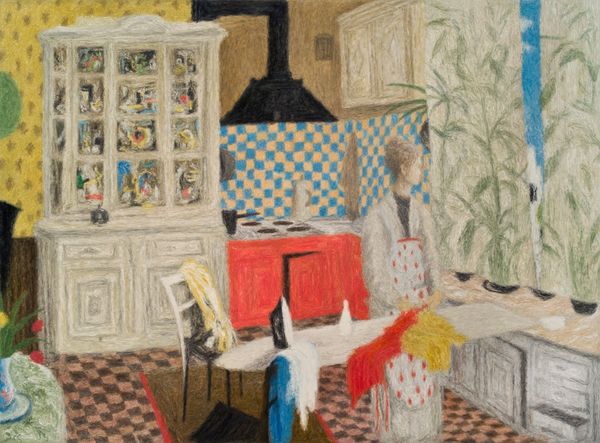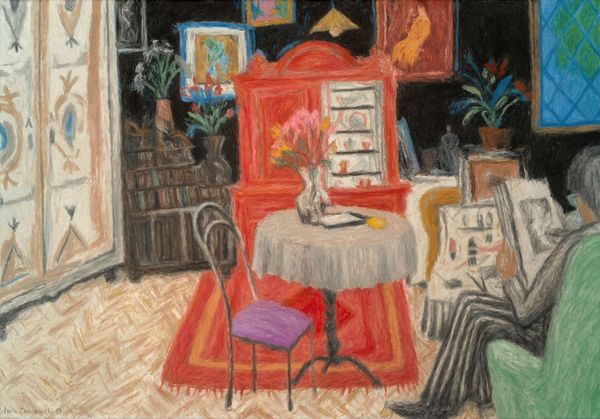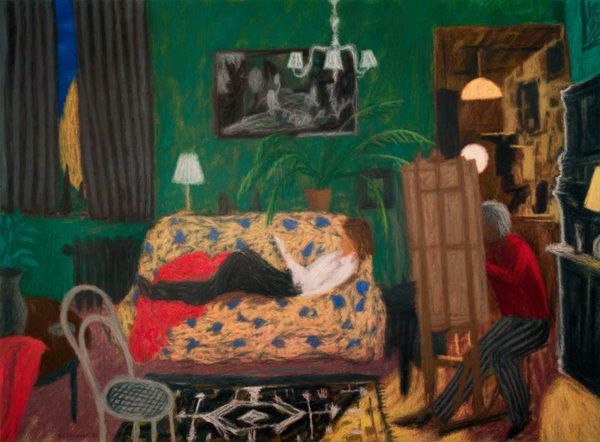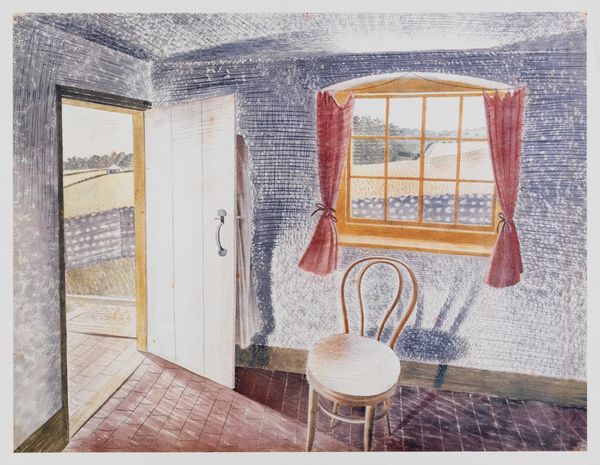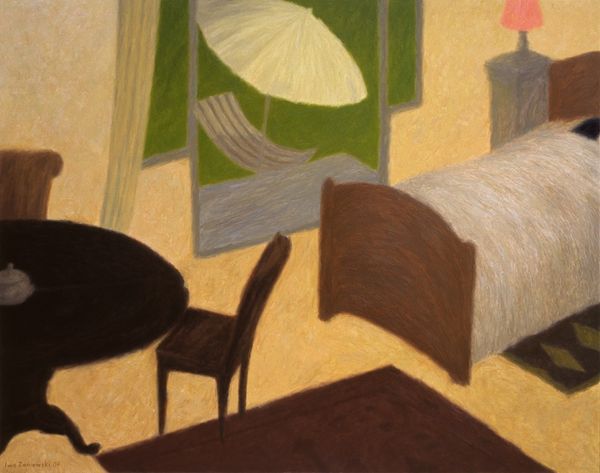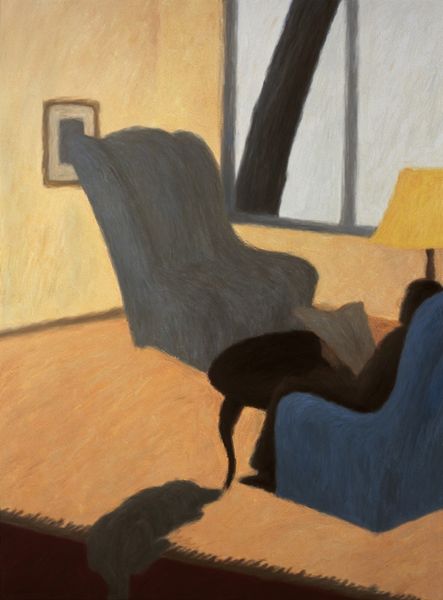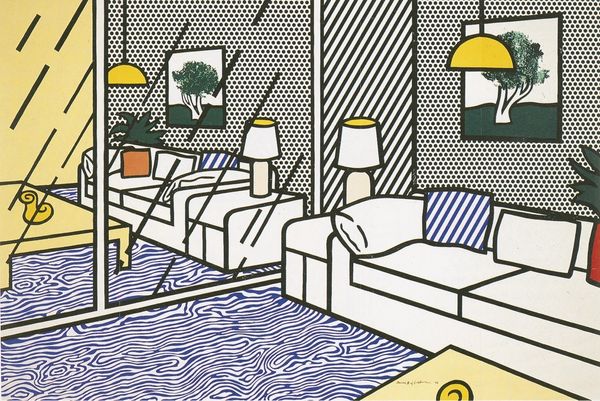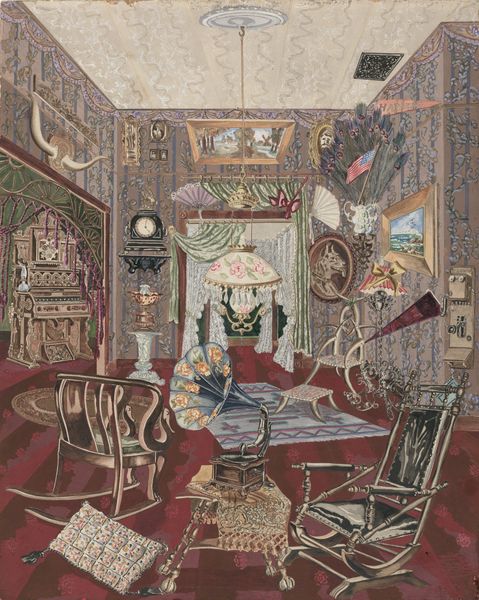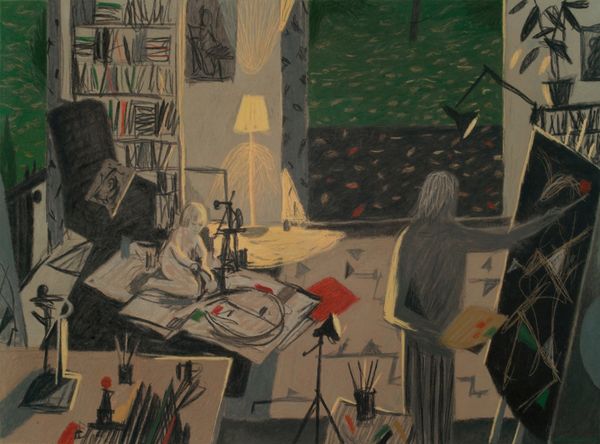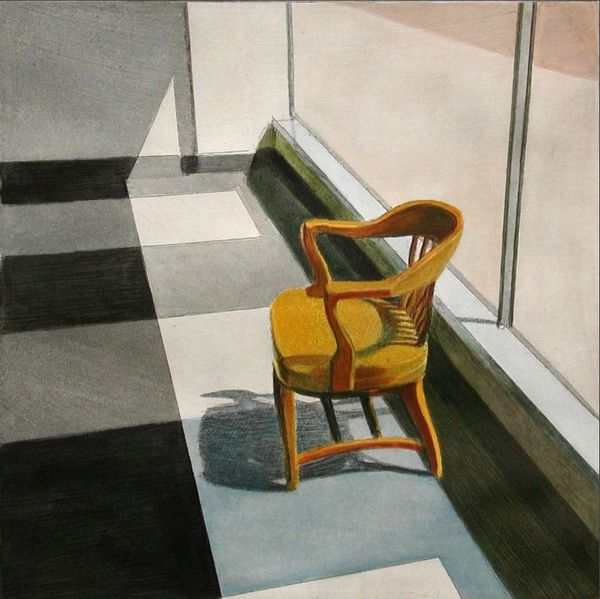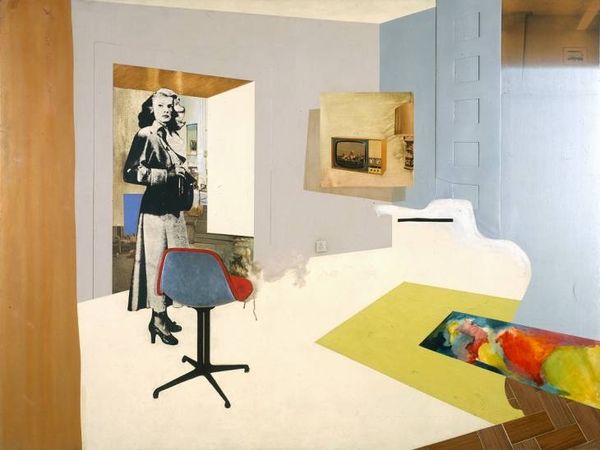
mixed-media, painting
#
art-deco
#
mixed-media
#
painting
#
oil painting
#
cityscape
#
painting art
#
modernism
Copyright: Public Domain: Artvee
Curator: The mixed-media piece before us, a 1930 "Design for Orinoka Fabric Advertisement," comes to us from the hand of Winold Reiss. Quite evocative, wouldn't you agree? Editor: Yes, strikingly so! There's a crispness, almost a geometric sensibility. The colors, while muted, create a space that feels both modern and a bit cold, almost sterile. What does it say to you? Curator: Immediately, I consider the function of such a piece – it's an advert. We need to consider how design during this era both reflected and influenced domestic ideals, and who was meant to buy it. The fabrics featured promise modernity, but is that accessible to everyone, given class and socio-economic status? Editor: True, advertisements don’t exist in a vacuum; they play a large role in establishing and disseminating societal values. This almost clinical presentation contrasts sharply with what many associate with "home." Where is the messiness, the human touch? The emphasis on sleek lines speaks volumes about aspirations of order, control, even social elevation. Curator: Absolutely. The Orinoka company presumably wanted to be seen as part of the wave of art-deco and modernism, with their fabrics contributing to a contemporary vision of domestic space. In terms of intersectional narratives, it would be interesting to examine the representation, or lack thereof, of different genders or races within this idealized vision. Does the design inadvertently exclude particular identities or lifestyles? Editor: Good point. In light of today's emphasis on diversity, what were the historical dynamics that excluded particular segments of society from participating in the sleekness of modern life? The abundance of reading material further amplifies this message—it’s not simply about having things, but about having a certain kind of taste. Curator: It's intriguing how something created to stimulate consumption becomes such a potent artifact for socio-cultural analysis. Reiss offers us not just a commercial illustration but a rich snapshot of the period's aesthetic and ideological tensions. Editor: Indeed. I came prepared to judge some fabric but found instead a potent statement about class, taste, and the careful orchestration of social expectations. Thank you, Winold Reiss, for far more than an ad design.
Comments
No comments
Be the first to comment and join the conversation on the ultimate creative platform.
